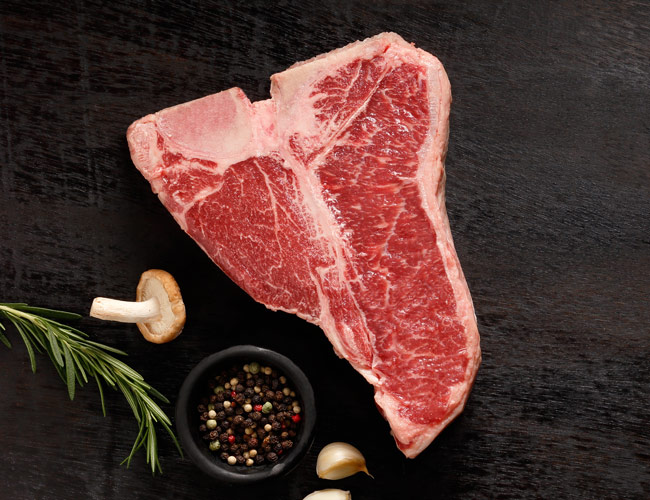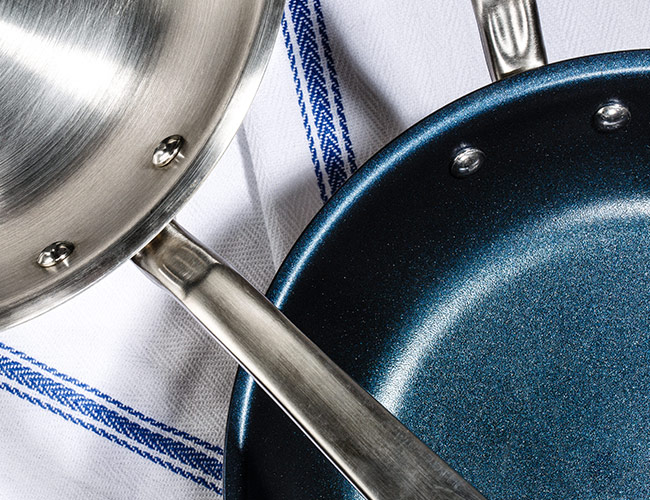The only skillet on the list to appear twice, The Field is our pick for best everyday skillet. You get the smooth surface of premium cast-iron, you get a price that isn’t eye-watering, you get a skillet light enough to handle day-in-day-out and you’re not going to feel the world-ending rage you might if you drop a skillet three times its price off to the floor.
Cooking Surface: 8.75 inches
Total Diameter: 10.25 inches
Weight: 4.5 pounds
Introduction
R
e-embracing craftsmanship. A righteous exodus from the flimsy and mass-produced. A feedback loop of hipsters following each other’s tails. Call it what you will, one of the biggest stories in the wide world of products is the surge of the maker movement, and few industries have been revived more thoroughly than that of cast-iron cookware.
In the first half of the 20th century, cast-iron cookware hit its peak, reaching near-ubiquity in the American home kitchen. A great many of the brands of the time — Favorite, Vollrath, Wagner and Griswold — made skillets considered collector’s items now. These pieces were light, hand-smoothed specimens. Today, some sell for dollar amounts in the thousands.
The rise of mass-manufacturing — coupled with the introduction of cooking materials like aluminum, stainless steel and various permutations of non-stick — spelled a violent downturn for cast-iron in the ’60s and ’70s. Lodge, the sole widely-available, American-made cast-iron manufacturer to come out of this period alive, has remained as such since. But, the recent rekindling of interest in handcrafted goods has led to something of a renaissance, or at the very least a second life, for the heavyset kitchen tool.
Point of all this being cast-iron cookware hasn’t been this cool since before the first World War, so it’s about time you got on board. Here’s everything you need to know.
These days you can buy damn near anything online — including some of the country’s finest cuts of beef. Read the Story
Important Terms
Cast-Iron: Iron made with around 1.7 percent carbon, giving it its classic heavy, brittle nature.
Seasoning: The layer of polymerized and carbonized fats between what you’re cooking and raw iron.
Pour Spouts: If present, small areas cast into both sides of the pan meant to easily discard (or save) sauces or excess grease.
Wall Slope: The gradient at which the walls of a cast-iron pan run into the cooking surface; the steeper the wall slope, the less tossing can be accomplished
Front Grip: A protruding area opposite the handle where you grab hold of the pan with your non-dominant hand; meant to make heavier dishes and pans less cumbersome.
As-Cast: The result of skipping the milling and polishing process on the cooking surface; when a skillet’s cooking area is rough and sandpapery, it is as-cast.
Rust: Also known as ferric oxide, a toxic result of the oxidation of bare cast-iron; avoided by a layer of seasoning, but easily fixable.
Smoke Point: The heat at which fats begins to break down and smoke; also the point you need to reach to properly season a pan.
How to Use a Cast-Iron Skillet
How to Heat Your Skillet
Get used to putting it on the stove (or by the fire) ten to fifteen minutes prior to cooking or applying oil. Iron is a terrible conductor, meaning it will take a few to get hot, but it’s rescued by tremendous heat insulation. Also be mindful that because it gets hotter than other cookware and can’t be quickly cooled by removing from heat, heavy smoking often occurs. You can cook nearly anything in cast-iron, but it shines brightest producing any dishes that are improved by a wicked crust: cornbread, pies, steaks, fried chicken and bacon are among the most popular dishes.
How to Clean Your Skillet
Cleaning is as simple as waiting a few minutes until after cooking (to let the pan cool) and scraping what you can out with a wooden spoon or spatula. All remaining bits and pieces are easily dispatched with a handful of kosher salt and light rubbing with paper towels or a dry sponge. If something is seriously stuck, a bit of water and even minimal soap isn’t going to destroy your seasoning.
How to Season Your Skillet
Crank your oven way up (self-clean cycle works wonders), grab your favorite fat (flaxseed is popular) and drop a very small amount on the cooking surface. Wipe the fat over all the cooking surface and various nooks and crannies of the pan, then wipe over that again with a clean paper towel. Too much oil and you’ll leave your pan sticky and not fully polymerized, and therefore not non-stick. Let your pan sit in the super-hot oven for an hour or more; you’re waiting to for the applied fat to exceed its smoke point, which is what causes it to attach firmly to the pan. If it looks shiny, leave it in longer. It’s as simple as that.
How to Remove Rust from Your Skillet
Rust isn’t a death sentence for cast-iron. If it’s flash rust — rust that forms after just a few minutes of iron exposure to air — you can usually just wipe it off and get it seasoned. Heavier layers of rust are removed by a soak in a vinegar solution (1:1 white vinegar to water), a wipe off, dry down and applying a layer of seasoning. If this isn’t effective and you’re game for a science experiment, look up “electrolysis.”
How to Store Your Skillet
Obviously, you’ll want to keep your skillet out of humid or damp areas. Beyond that, it’s not recommended to stack cast-iron pans in each other as they can easily scratch a hard-earned layer of seasoning away if twisted the wrong way. If you have room, simply tossing it in the oven after cleaning is an ideal storage spot.
How to Pick the Right Size
Consider what you want to cook in your cast-iron skillet, how often and for how many people. Then understand that a skillet’s cooking surface is smaller than the size it’s typically labeled as, so think of how much space whatever it is you’re wanting to cook will take up and ensure it will fit. Most 10-inch skillets have about nine inches of cooking surface, which is enough to comfortably cook one large ribeye but not quite a full pork loin.
If you want to cook full breakfasts, multiple steaks at a time, or just run a household with a few more mouths to feed, go bigger — something with at least 9.5-inches of cooking surface is a good place to start. Yes, the weight will climb the bigger you go, but don’t shirk yourself and your family out of quality food because you have to use two hands.
Spoiler: your trusty non-stick couldn’t sear properly if its life depended on it. Read the Story






